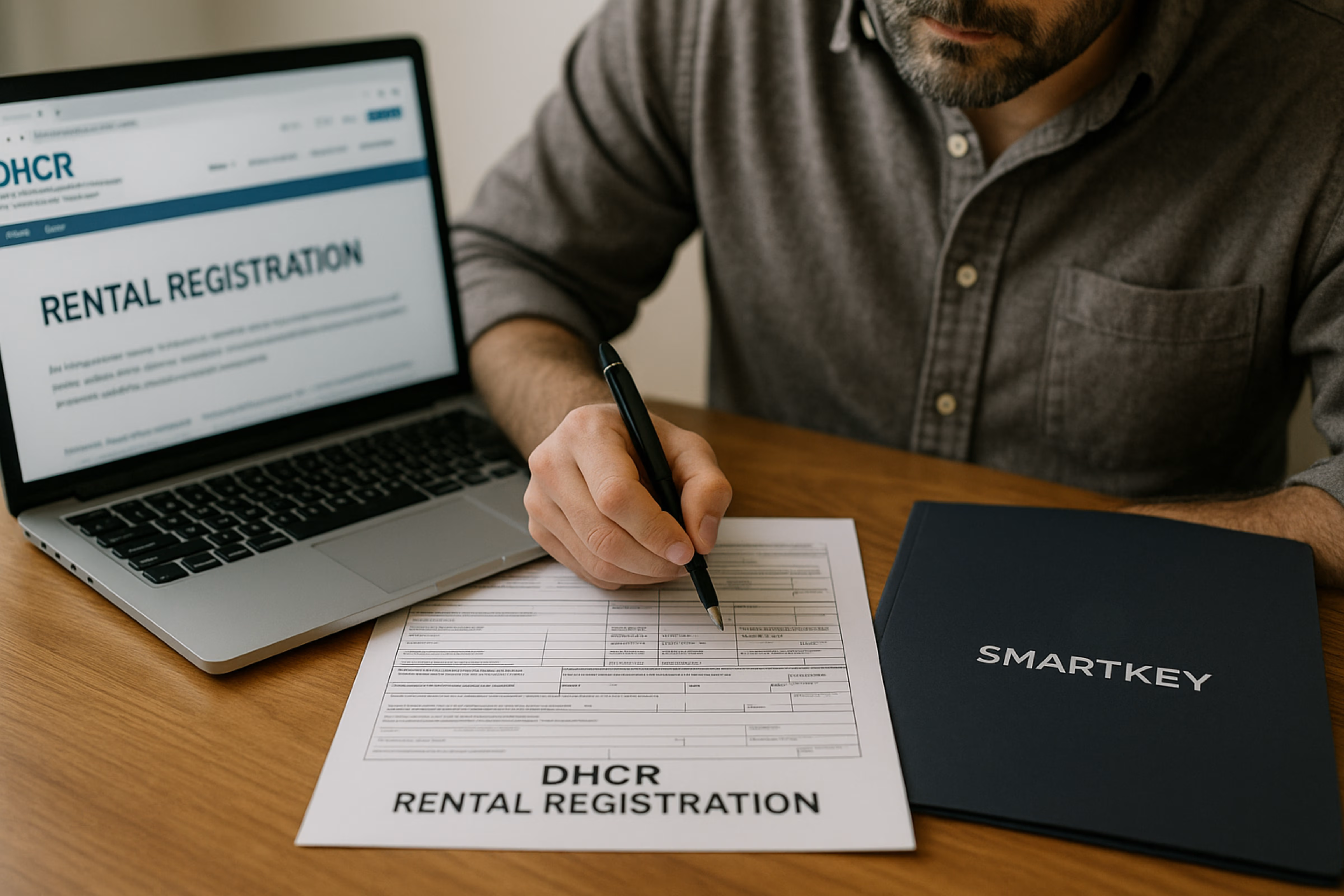Filing with the Division of Housing and Community Renewal (DHCR) is more than just standard paperwork for New York landlords who manage rent-regulated apartments, it serves as the foundation for compliance. When completed correctly, DHCR filings protect your right to collect legal rent, keep you in compliance with state housing laws, and prevent costly legal disputes. If done improperly, they may result in fines, delay rent increases, or, worse, lead to lengthy tenant disputes.
With an emphasis on what to file, when to file, and how to avoid common pitfalls, this guide walks you through every stage of filing with DHCR. This tutorial will give you the confidence you need to handle DHCR filings, no matter how many rent-stabilized buildings you own or manage throughout the city.
What Is DHCR Filing and Why Does It Matter?
The DHCR is the state agency that administers rent regulation in New York. If your property includes rent-stabilized units, you are legally obligated to register those apartments with DHCR and keep filings up to date.
According to the NY rent guidelines DHCR framework, filing is a statutory requirement and is not optional. While other filings deal with matters such as significant capital improvements, hardship petitions or requests for the deregulation of an apartment, annual registrations record the legally regulated rent for each unit.
Why DHCR Filing Matters
• Legal compliance: Without proper filings, the rent you’re charging may be considered unlawful even if it’s in line with market rates.
• Rent increases: You cannot apply lawful increases if filings are missing or incomplete.
• Protection in disputes: Accurate, timely filings provide a paper trail that supports your case if tenants challenge you.
• Avoiding penalties: Failing to file can lead to fines and limit your ability to enforce lease terms.
Think of DHCR filing as both a shield and a ticket: it shields you from tenant claims and gives you the authorization to lawfully adjust rents when permitted.
Step 1 — Determine Which DHCR Filings Apply to You
The first step is clarity. Not all filings are created equal, and which ones you need depends on your building and tenant circumstances.
Common Filings Every Landlord Should Know
1. Annual Rent Registration (ARR) – required for every rent-stabilized unit.
2. Initial Registration – triggered when a unit first becomes rent-stabilized.
3. Petitions and Applications – for Major Capital Improvements (MCI), Individual Apartment Improvements (IAI), hardship petitions, or deregulation requests.
4. Responses to the DHCR complaint process – such as tenant service reduction complaints or building code violations.
📌 Tip: Visit the DHCR website or consult a rent-regulation attorney to verify exactly what applies to your property. Skipping a required filing because you assumed it didn’t apply is a fast track to penalties.
Step 2 — Gather and Organize Your Documentation
Think of the DHCR rent registration process as building a legal case: you need evidence. The smoother your documentation, the easier and faster the filing.
Key Documents You’ll Need
• Lease agreements (current and prior)
• Rent rolls and payment histories
• Previous DHCR registrations for each unit
• Proof of improvements (receipts, invoices, permits)
• Financial statements for hardship petitions
📂 Example: Suppose you’re filing for a Major Capital Improvement increase after installing a new elevator. You’ll need contractor contracts, proof of payment, and permits. DHCR is meticulous if documents aren’t airtight, expect delays or denials.
Step 3 — Choose the Correct Filing Method
The DHCR filing process can be completed online, by mail, or in person. Online filing through the official DHCR Rent Registration Portal is the fastest and provides instant confirmation. Always use the most recent forms available on the DHCR site older versions are frequently rejected.
Step 4 — Complete the Forms Accurately
Success depends on accuracy. Disputes may arise from even a minor error in your rent figures or tenant information. Before submitting, carefully review all information. When determining allowable increases, confirm the DHCR requirements and the NY rent guidelines.
🖊️ Example: If your lease reflects a $1,650 monthly rent but you mistakenly enter $1,605 on the registration form, DHCR will flag the discrepancy. Small errors often lead to larger disputes if tenants contest them.
Step 5 — Submit Before the Deadline
DHCR filing deadlines are non-negotiable. Missing even one can block lawful rent increases and create compliance issues. Always file ahead of time and retain proof of submission for your records.
Key Deadlines
• Annual Rent Registration: Due by July 31st each year.
• Petitions and Applications: Deadlines vary but are tied to lease terms or completion of improvements.
📌 Best Practice: File early to allow time for corrections if DHCR flags an issue.
Step 6 — Follow Up and Respond Promptly
After submitting, keep an eye on your DHCR account for any requests or updates from DHCR. Responding promptly and professionally helps you avoid delays and demonstrates compliance, particularly when handling DHCR complaint procedures or follow-up questions about rent inconsistencies.
Common Mistakes to Avoid
1. Missing or late submissions
2. Using outdated forms
3. Failing to respond to DHCR complaints on time
4. Errors in rent calculations or missing attachments
5. Ignoring tenant correspondence
Actionable Tips for Smooth DHCR Filings
• Create a compliance calendar with all DHCR deadlines.
• Digitize your records for easy access.
• Cross-check rent renewals with registration accuracy.
• Consult experts for complex MCIs or hardship petitions.
• Stay updated on all NY rent guidelines DHCR changes.
If navigating the DHCR filing process feels overwhelming or you’re unsure how to handle rent registrations, petitions, or tenant complaints.
Smart Key Property Management is here to help. Our experts handle compliance, documentation, and communication with DHCR on your behalf so you can focus on managing your property stress-free.
👉 Contact Us today to simplify your filings and stay fully compliant with New York rent regulations.
Final Thoughts
Mastering how to file with DHCR is an investment in stability, not just compliance. Proper DHCR rent registration ensures lawful rent collection, smoother tenant relations, and long-term protection for your property.
By understanding the DHCR filing process and staying proactive, landlords can avoid disputes and keep their operations efficient under the NY rent guidelines DHCR system.
"When in doubt, consult professionals small investments in compliance now save major costs later". Filing the right way is ultimately about peace of mind for both landlords and tenants.



.avif)